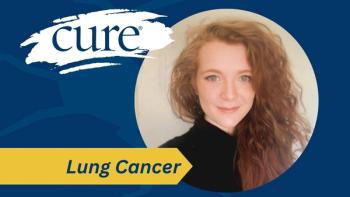
- Fall 2012
- Volume 11
- Issue 3
The Latest on Lignans for Cancer
Why you may need to eat (and drink) more lignans.
Doctors say you should eat more fruits and vegetables. But if they were being more specific, they might tell you one day to eat more lignans. Found in things as diverse as flaxseeds and Chianti, lignans are a form of plant compound called phytoestrogens that have recently been shown to contain potential cancer-fighting properties. They may also be related to better survival after postmenopausal breast cancer, according to a 2011 study in the Journal of Clinical Oncology.
Previous studies examined the health benefits of phytoestrogens, but most of those studies focused on soy-based foods, also known as isoflavones. About 20 years ago, the focus shifted from soy-based isoflavones toward plant-based lignans. Part of the reason had to do with facing dietary realities: In North America, the average family consumes far more lignan-rich foods, such as wheat, flaxseed and peas, than soy-based foods, such as tofu.
In one of the most recent studies, researchers tracked levels of enterolactone—a byproduct of lignans—among postmenopausal breast cancer patients. Among other things, they found that women who reported the highest levels of enterolactone had higher odds of cancer survival—as much as 40 percent.
How did that happen? Lignans, one theory posits, share some structural similarities with estrogens, which are associated with a higher risk of breast cancer. Basically, they’re about the same shape. That means lignans might have the ability to bind to estrogen receptors—blocking stronger forms of estrogens from doing so, and thus preventing the growth of cancer cells.
Research is still ongoing as to whether lignans can benefit more than just breast cancer patients, but there is reason for optimism. “In animal studies, lignans have also been shown to exert other mechanisms associated with reduced risk of tumor growth, such as inhibition of metastasis,” says Ruth Patterson, PhD, professor of family and preventive medicine at the University of California, San Diego’s Moores Cancer Center in La Jolla, Calif.
Better yet, since lignans are found in the walls of plant cells, they tend to be plentiful, cheap and fairly easy to incorporate into a diet plan. Flaxseed contains the highest concentration of lignans, nearly three times as much as sesame seeds, the next leading food source. You can also find lower, but still significant, doses of lignans in Chianti, cabernet, rice, peas and whole grains.
Researchers, however, are still reluctant to recommend a sudden increase in the consumption of flaxseed and other lignan-rich foods—and for good reason. Many are reminded of a study in the 1980s that suggested fruits and vegetables high in beta carotene lowered the risk of lung cancer. In trials, however, beta carotene was actually found to increase the incidence of tumors.
“The investigators are not sure why this happened, but it could well be because beta carotene was given as a supplement and in amounts higher than typically obtained in even a healthy diet,” says Susan McCann, PhD, associate professor of oncology at the Roswell Park Cancer Institute in Buffalo, N.Y., and author of a study on lignans and breast cancer. “It’s quite likely that beta carotene in isolation works differently from beta carotene in a vegetable in combination with other food compounds.”
While researchers are encouraged by the initial findings, they’re quick to point out that not every study linking lignans and breast cancer reached the same conclusions. “Some studies find a protective effect, whereas some find no associations at all,” McCann says. “Others have more consistently shown either no association, or in a couple, an actual increase in cancer risk.”
Clinical trials, which may get under way soon, could help researchers determine whether the connection between lignans and cancer prevention is sound and risk-free. Only then will we know for certain if one of the healthiest moves we can make all day is as simple as which bagel to choose for breakfast—or, better yet, which wine to pour for dinner.
Better yet, since lignans are found in the walls of plant cells, they tend to be plentiful, cheap and fairly easy to incorporate into a diet plan.
Articles in this issue
about 13 years ago
Many Young Patients Still Not Receiving Fertility Informationabout 13 years ago
To Sleep Perchance to Remain Healthyabout 13 years ago
Less May Be More in Some Pediatric Lymphomasabout 13 years ago
Book Excerpt: The Cost of Hopeover 13 years ago
Study Links Sun Exposure and Pancreatic Cancer Riskover 13 years ago
Common Drugs Can Hinder Targeted Chemotherapy Agentsover 13 years ago
The Waiting Roomover 13 years ago
Cancer Survivor Wins Gold at Olympic Gamesover 13 years ago
Telling Kids About Cancer



